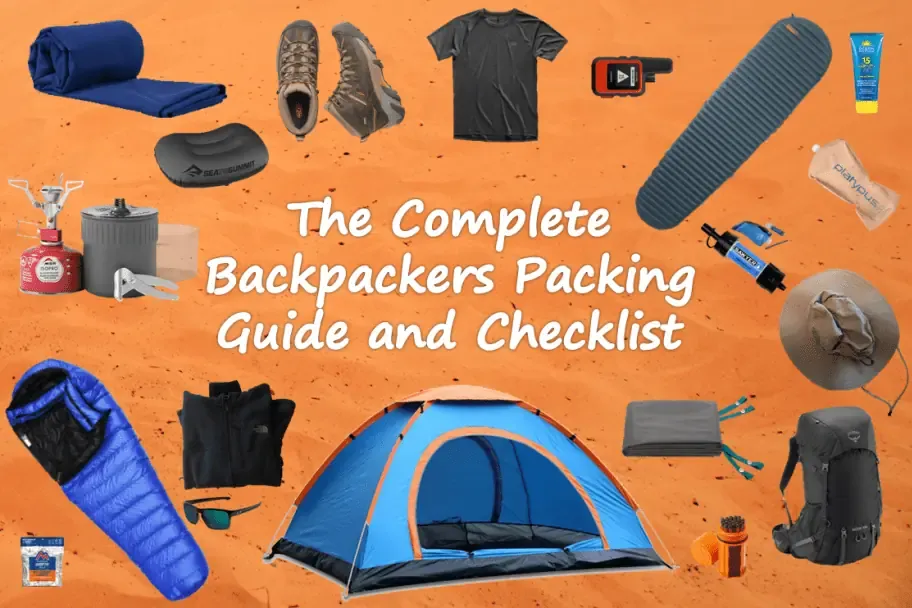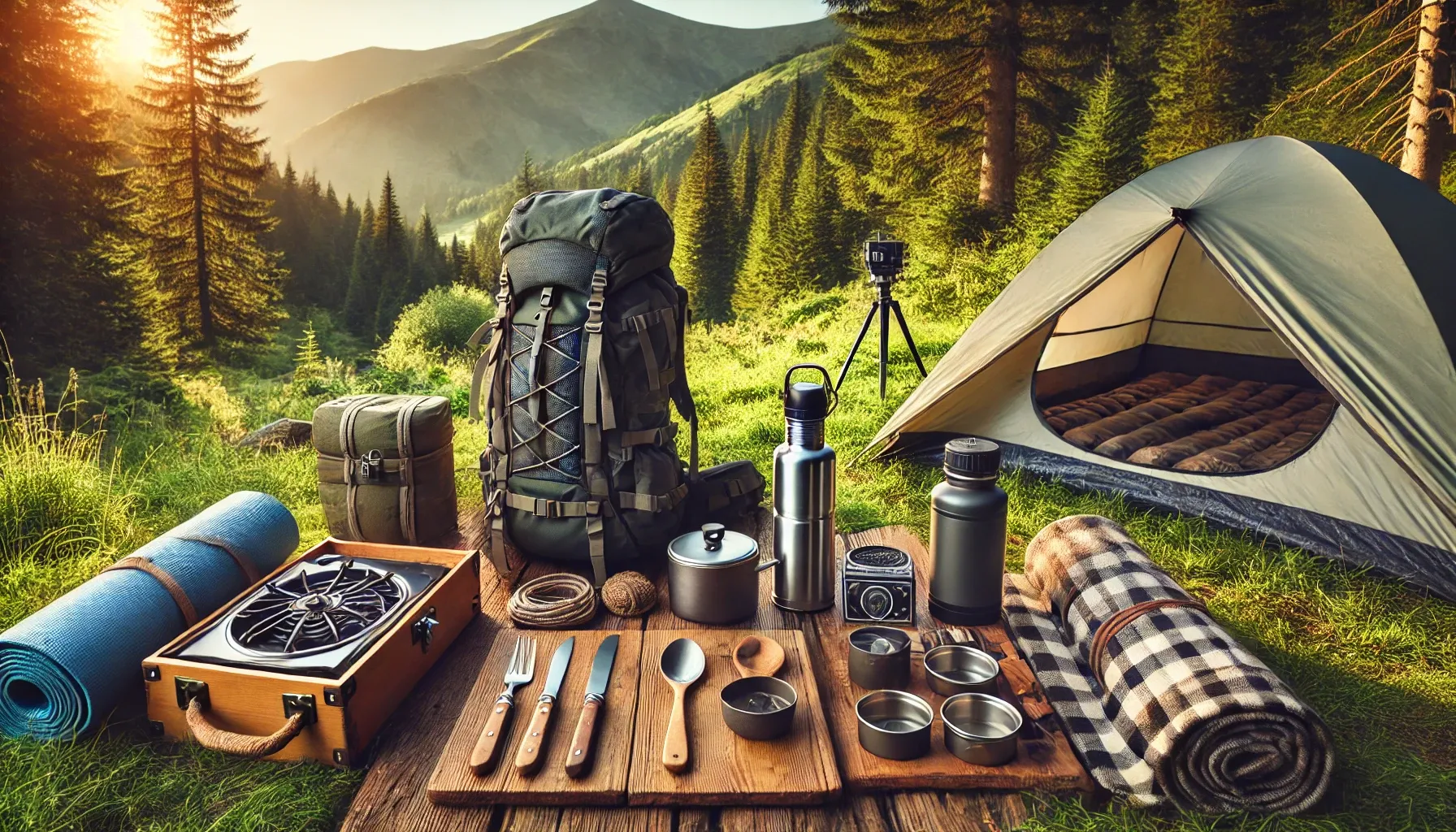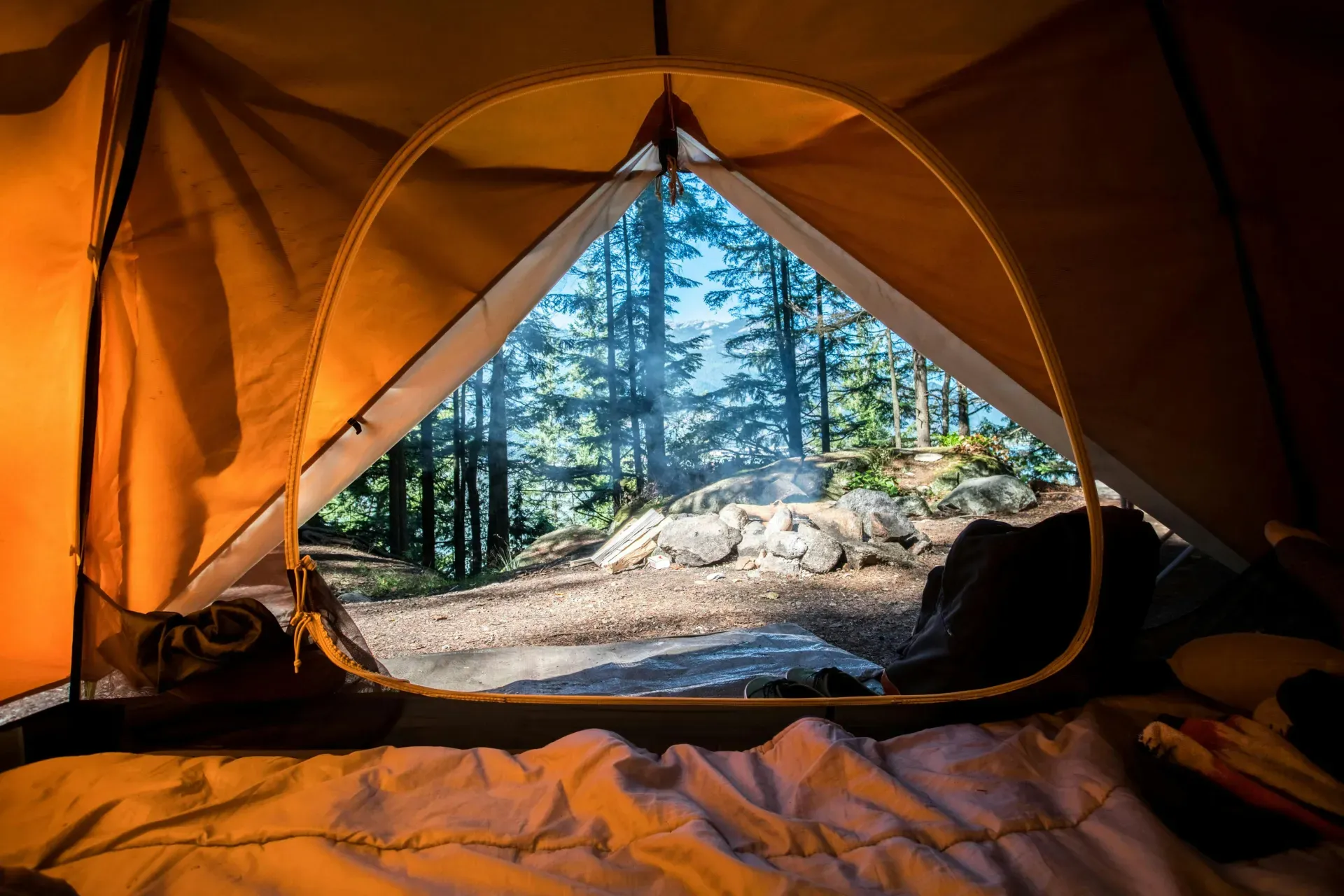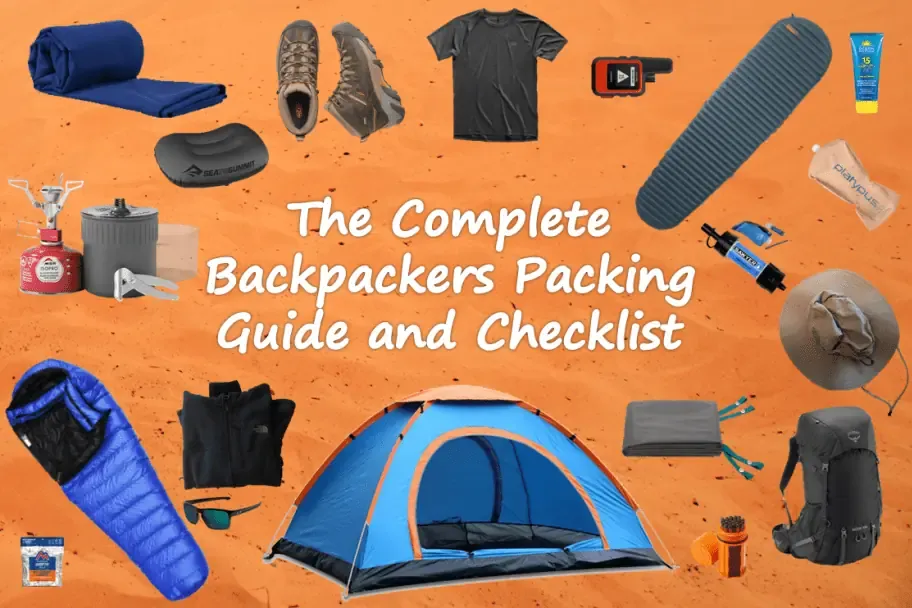
Ultimate Camping Gear Guide 2025: Essential Equipment for Every Adventure
After spending countless nights under the stars and exploring remote wilderness areas across the country, I've learned that having the right camping gear can make or break your outdoor experience. Whether you're planning your first camping trip or looking to upgrade your current setup, this comprehensive guide will help you choose the essential equipment that will keep you comfortable, safe, and prepared for any adventure. From my personal experiences camping in Yellowstone's backcountry to weekend trips with family at NatureGuests, I'll share the gear that has proven indispensable on every journey.
Essential Camping Gear Overview

When I first started camping fifteen years ago, I made the classic mistake of either overpacking or forgetting essential items. Through trial and error, weather emergencies, and countless conversations with park rangers across different national parks, I've developed a systematic approach to camping gear selection that focuses on reliability, versatility, and weight efficiency.
The foundation of any successful camping trip lies in understanding the four pillars of essential camping gear: shelter, sustenance, safety, and comfort. Each category serves a specific purpose, and I've learned that investing in quality gear within these categories will serve you better than buying cheap alternatives that fail when you need them most.
During my recent three-week camping expedition through the Rocky Mountains, I witnessed firsthand how proper gear selection can mean the difference between a memorable adventure and a potentially dangerous situation. The weather changed rapidly from sunny skies to heavy snowfall, and having the right equipment allowed our group to not only survive but thrive in challenging conditions.
For beginners, I recommend starting with a basic camping gear setup that includes the absolute essentials: a reliable tent, sleeping system, cooking equipment, and safety items. As you gain experience and identify your camping preferences, you can gradually expand your collection with specialized gear that enhances your specific style of outdoor adventure.
Expert Insight
"The best camping gear is the gear you know how to use properly. I always recommend practicing with your equipment at home before heading into the wilderness. This includes setting up your tent in the dark, using your stove in windy conditions, and understanding how your sleeping system performs in different temperatures."
Quality camping gear represents an investment in your safety and enjoyment. While it's possible to find budget-friendly options, I've learned that certain items—particularly shelter, sleep systems, and safety equipment—should never be compromised on quality. The extra cost upfront pays dividends in durability, reliability, and peace of mind during your outdoor adventures.
Shelter and Sleeping Systems

Your shelter system is arguably the most critical component of your camping gear arsenal. After sleeping in tents ranging from ultralight backpacking models to family-sized car camping shelters, I can confidently say that the right tent choice depends entirely on your specific needs, group size, and environmental conditions.
Choosing the Right Tent
When selecting a tent, consider the three-season versus four-season debate. Three-season tents handle spring, summer, and fall conditions excellently, while four-season tents are engineered for winter camping and extreme weather. For most campers, a high-quality three-season tent provides the best balance of weight, ventilation, and weather protection.
My personal experience with different tent configurations has taught me that dome tents offer the best balance of stability and interior space, while tunnel tents provide maximum living area but require more careful setup. For families or groups, I recommend checking out our comprehensive top tent brands guide for detailed comparisons.
Seasonal Considerations
During spring camping in the Pacific Northwest, I've learned that weather can change dramatically within hours. Having a tent with excellent waterproofing and ventilation prevents condensation buildup that can leave you cold and damp by morning.
Sleeping Systems That Work
A complete sleeping system consists of three components: sleeping bag, sleeping pad, and pillow. The interaction between these elements determines your comfort level throughout the night. I've found that many campers underestimate the importance of ground insulation, leading to cold, restless nights even in warm weather.
For camping gear recommendations, I always suggest choosing a sleeping bag rated at least 10 degrees below the expected low temperature. This buffer accounts for individual differences in cold tolerance and unexpected weather changes. Synthetic insulation works better in wet conditions, while down provides superior warmth-to-weight ratios for dry conditions.
If you're looking for specific tent recommendations, our guides on hiking tents for 2 people, 1-person backpacking tents, and 3-person backpacking tents provide detailed analysis of the best options for different group sizes.
Cooking and Food Storage
Proper nutrition fuels your outdoor adventures, and having reliable cooking equipment ensures you can prepare satisfying meals regardless of conditions. Over the years, I've cooked everything from simple one-pot meals to elaborate multi-course dinners using various camping gear setups, and I've learned that simplicity often trumps complexity in the wilderness.
Essential Cooking Equipment
A reliable camp stove forms the foundation of your cooking system. I personally prefer canister stoves for their convenience and precise flame control, though liquid fuel stoves perform better in extreme cold. For car camping, two-burner stoves provide the cooking capacity needed for larger groups, while ultralight backpacking stoves prioritize weight savings over cooking speed.
Your cookware selection depends on group size and cooking style. Lightweight aluminum or titanium pots work well for boiling water and simple meals, while stainless steel or cast iron provides better heat distribution for complex cooking. I always carry a versatile pot that can serve multiple functions—boiling water, cooking pasta, and even baking bread with proper technique.
Water treatment represents a critical aspect of camping gear planning. I never rely on finding clean water sources, instead carrying purification tablets, a quality filter, or UV sterilizer. Having multiple water treatment methods provides redundancy that could save your trip if your primary method fails.
Field-Tested Tip
During a week-long canoe camping trip in Minnesota's Boundary Waters, I discovered that pre-planning meals and organizing ingredients in labeled containers saves significant time and reduces food waste. This system also helps ensure you don't forget essential ingredients for planned meals.
Food Storage Solutions
Proper food storage prevents spoilage and protects your supplies from wildlife. Hard-sided coolers work well for car camping, providing ice retention that keeps perishables safe for several days. For backpacking, bear-proof containers or hanging systems protect food from animals while maintaining organized storage.
I've learned that meal planning significantly impacts your camping gear requirements. Simple meals requiring fewer ingredients and cooking tools reduce weight and complexity. Pre-made spice blends, dehydrated vegetables, and shelf-stable proteins form the foundation of my camping menu, allowing for varied, nutritious meals without excessive gear.
Essential Camping Gear Video Guide
Watch this comprehensive guide to the 13 essential camping gear items you need for every outdoor adventure.
Clothing and Weather Protection
Proper clothing selection represents one of the most important aspects of camping gear planning, yet it's often overlooked by beginners. The layering system provides adaptability to changing conditions, allowing you to maintain comfort and safety regardless of weather. My clothing philosophy centers on versatility, moisture management, and protection from the elements.
The Layering System
Base layers form the foundation of effective clothing systems. Merino wool and synthetic materials excel at wicking moisture away from your skin while providing insulation when wet. I avoid cotton base layers in all conditions, as cotton retains moisture and loses insulation properties when wet, potentially leading to hypothermia.
Insulating layers trap warm air while allowing moisture to escape. Fleece jackets, down vests, and synthetic insulated jackets provide different benefits depending on conditions. Down insulation offers superior warmth-to-weight ratios but loses effectiveness when wet, while synthetic insulation maintains warmth in damp conditions.
Shell layers protect against wind and precipitation while allowing moisture vapor to escape. A quality rain jacket and pants complete your camping gear weather protection system. I prefer jackets with full-zip openings and ventilation zippers that allow temperature regulation during active periods.
Footwear and Accessories
Footwear selection depends on terrain, weather, and activity level. Hiking boots provide ankle support and durability for rough terrain, while trail runners offer lighter weight and faster drying for well-maintained trails. I always carry camp shoes for comfort around the campsite and to allow hiking footwear to dry.
Accessories like hats, gloves, and buffs provide critical protection for extremities. A warm hat prevents significant heat loss, while sun hats protect against harmful UV radiation. Gloves suitable for your expected conditions prevent frostbite and maintain dexterity for essential tasks.
Regional Adaptation
Camping in different regions requires clothing adaptation. Desert camping demands sun protection and breathable fabrics, while mountain camping requires insulation and wind protection. Understanding regional climate patterns helps you select appropriate clothing for your specific adventure.
Clothing maintenance in the field extends the life of your camping gear and maintains its effectiveness. Quick-drying fabrics, stain-resistant treatments, and proper care techniques keep clothing functional throughout extended trips. I always pack a small sewing kit for field repairs and consider clothing durability when making purchasing decisions.
Expert Tips and Recommendations
After decades of camping experience and countless conversations with fellow outdoor enthusiasts, I've developed practical strategies for selecting, maintaining, and using camping gear effectively. These insights come from real-world experience and can help you avoid common mistakes while maximizing your outdoor enjoyment.
Gear Selection Strategy
Quality trumps quantity when building your camping gear collection. I recommend starting with essential items and gradually adding specialized equipment as you gain experience and identify specific needs. This approach prevents overconsumption while ensuring you have reliable gear for your adventures.
Multi-purpose items provide excellent value and reduce pack weight. A bandana serves as first aid supply, pot holder, and cleaning cloth. Trekking poles double as tent poles for ultralight shelters. Duct tape repairs everything from tent tears to broken buckles. Thinking creatively about gear applications saves space and weight.
Seasonal gear rotation keeps your equipment organized and ready for use. I maintain separate storage for warm weather and cold weather camping gear, ensuring everything is clean, dry, and properly stored. This system prevents last-minute scrambling and ensures gear remains in good condition.
Maintenance and Care
Proper maintenance extends the life of your camping gear and ensures it performs when needed. I clean and inspect all equipment after each trip, addressing any issues before they become major problems. Waterproofing treatments, zipper maintenance, and proper storage prevent premature failure.
Documentation helps track gear performance and warranty information. I maintain a simple spreadsheet listing purchase dates, warranty periods, and maintenance history for major items. This information proves valuable for warranty claims and replacement planning.
Sustainability Tip
Consider the environmental impact of your gear choices. Durable, repairable equipment reduces waste compared to disposable alternatives. Supporting companies with sustainable practices and repair programs contributes to environmental conservation while often providing superior products.
Testing gear before critical trips prevents disappointment and potential safety issues. I always test new equipment in controlled conditions before relying on it in the wilderness. This includes setting up tents, testing stoves, and verifying that all components work together properly.
For comprehensive camping gear information and detailed reviews, visit our complete camping gear guide where we provide in-depth analysis of the latest equipment and seasonal recommendations.
Conclusion
Selecting the right camping gear represents an investment in your outdoor experiences and safety. Throughout this guide, I've shared insights gained from years of wilderness adventures, equipment testing, and learning from both successes and failures. The key to successful gear selection lies in understanding your specific needs, prioritizing quality over quantity, and continuously refining your equipment based on real-world experience.
Remember that the best camping gear is the gear you know how to use properly. No amount of expensive equipment can substitute for knowledge, practice, and sound judgment in the wilderness. I encourage you to start with essential items, practice with your equipment, and gradually expand your collection as you gain experience and identify specific needs.
The outdoor community thrives on shared knowledge and experiences. I hope this guide provides valuable insights for your gear selection process and contributes to many successful camping adventures. Whether you're planning a weekend car camping trip or an extended backpacking expedition, having the right equipment and knowledge will enhance your connection with nature and create lasting memories.
Your camping gear collection will evolve as your interests and abilities develop. Embrace this evolution as part of the outdoor experience, and don't hesitate to seek advice from experienced campers, park rangers, and outdoor retail professionals. The camping community is generally welcoming and eager to share knowledge that enhances everyone's outdoor experiences.
Start Your Adventure Today
Ready to begin your camping journey? Explore our curated selection of essential camping gear and start building your perfect outdoor setup.
Shop Complete Camping Gear SetsSafe travels and happy camping! Remember to always follow Leave No Trace principles and respect the natural environments that provide us with incredible outdoor experiences.


